Is Central Coast marine sanctuary a win for offshore wind? Why plan makes tribes ‘nervous’
Is the proposed Chumash Heritage National Marine Sanctuary a win for the offshore wind energy industry?
Local Indigenous advocates say the federal government’s boundaries for the sanctuary appear to favor energy production over protecting biodiversity in the Pacific Ocean off California’s Central Coast.
The National Oceanic and Atmospheric Administration has proposed a 5,617-square-mile marine sanctuary stretching from Hazard Canyon Reef, south of Morro Bay, to an area just north of Goleta in Santa Barbara County, according to draft designation documents released on Aug. 24.
The release of the draft designation documents — a draft management plan, draft environmental impact statement, proposed regulations and proposed boundaries — kicked off the beginning of the last comment period available to the public, which ends Oct. 25.
After review of the comments, NOAA will release its final designation documents. The sanctuary is expected to be designated in 2024.
Should it be designated, the area NOAA proposed as a marine sanctuary will forever be protected from most types of development, including offshore oil drilling.
While Indigenous advocates called NOAA’s vision for the proposed sanctuary a great step in the right direction for protecting the marine environment of the Central Coast, they note that it leaves out a large area included in the original nomination of the sanctuary.
Roughly 2,000 square miles of ocean along a 30-mile section of coastline from just south of Morro Bay to Cambria were excluded from NOAA’s proposed boundaries for the marine sanctuary.
“There is so much biodiversity and critical habitat in that area,” said Violet Sage Walker, chairwoman of the Northern Chumash Tribal Council. Her father, Fred Collins, originally nominated the sanctuary in 2015.
“(NOAA’s plan) potentially opens up a 30-mile corridor of ‘anything goes,’ ” Walker said.
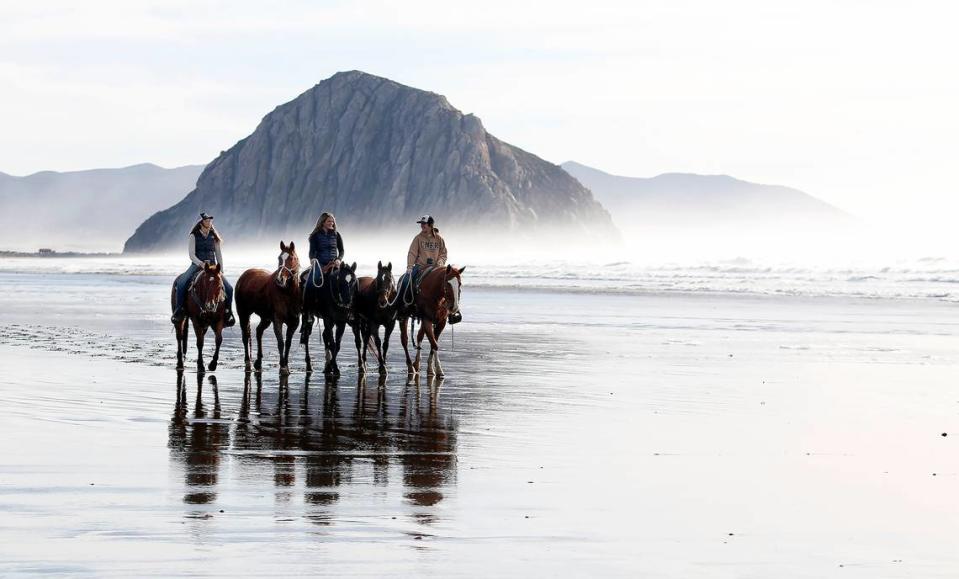
NOAA proposal leaves 30-mile stretch of coast unprotected
Excluding the area from the sanctuary would allow for a “corridor for the industrial development associated with offshore wind energy production,” according to the NOAA’s website for the proposed sanctuary.
The Morro Bay wind energy area — a 376-square-mile area of the Pacific Ocean off the coast of Cambria and San Simeon — was leased to three companies in December for a collective $425.6 million. The area could generate three to six gigawatts of electricity if fully built out with floating wind turbines.
“Certain concentrations of this infrastructure may not be compatible with a national marine sanctuary depending on the number of cables and disturbance that could occur,” the website says, referencing the 20 to 30 subsea electrical transmission cables and possibly several floating substations expected to be built as part of the offshore wind energy development off Cambria’s coast.
NOAA’s proposed regulations for the Chumash Heritage National Marine Sanctuary include a permit process that could allow for the placement and maintenance of offshore wind subsea transmission cables.
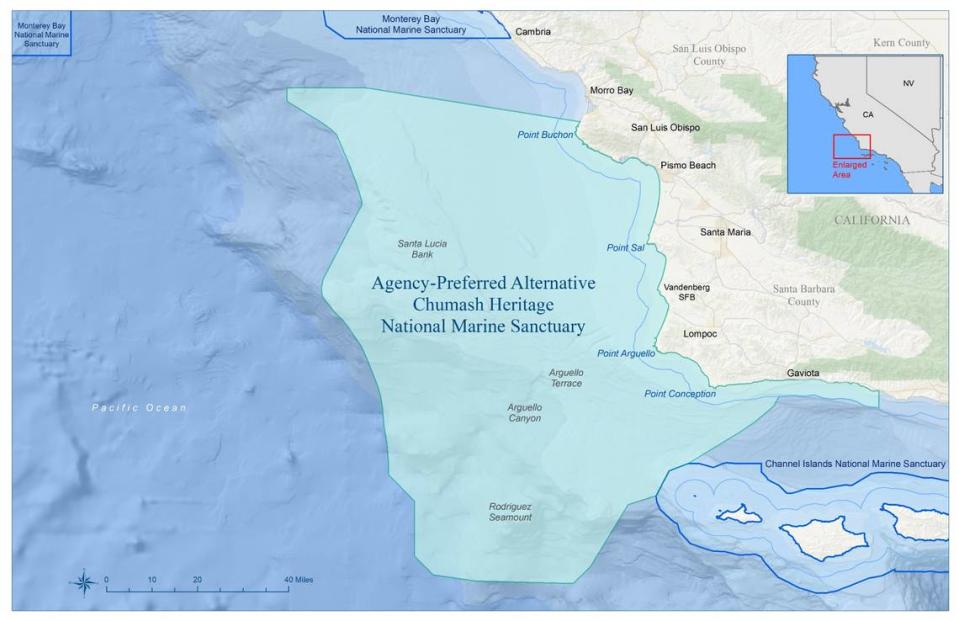
However, “the disturbance of submerged lands and associated potential impacts on biological resources that could result from development on this scale would likely be unprecedented in a national marine sanctuary,” NOAA’s docket entry in the Federal Register for the proposed sanctuary said. “In excluding this area, NOAA anticipates developers will be able to plan infrastructure for this area, which may minimize the potential requests to use other parts of the proposed sanctuary.”
Walker said this “makes me nervous.”
“If what they are proposing is so destructive it can’t be in a marine sanctuary, then should it even happen?” she asked, noting that the Northern Chumash Tribal Council has historically supported offshore wind energy development.
Michael Khus-Zarate, board member of the Coastal Band of the Chumash Nation, said there’s no valid reason to leave the area unprotected.
“The fact that NOAA accepted the nomination as it was means they understand the importance of protecting the entirety of the coast,” he said.
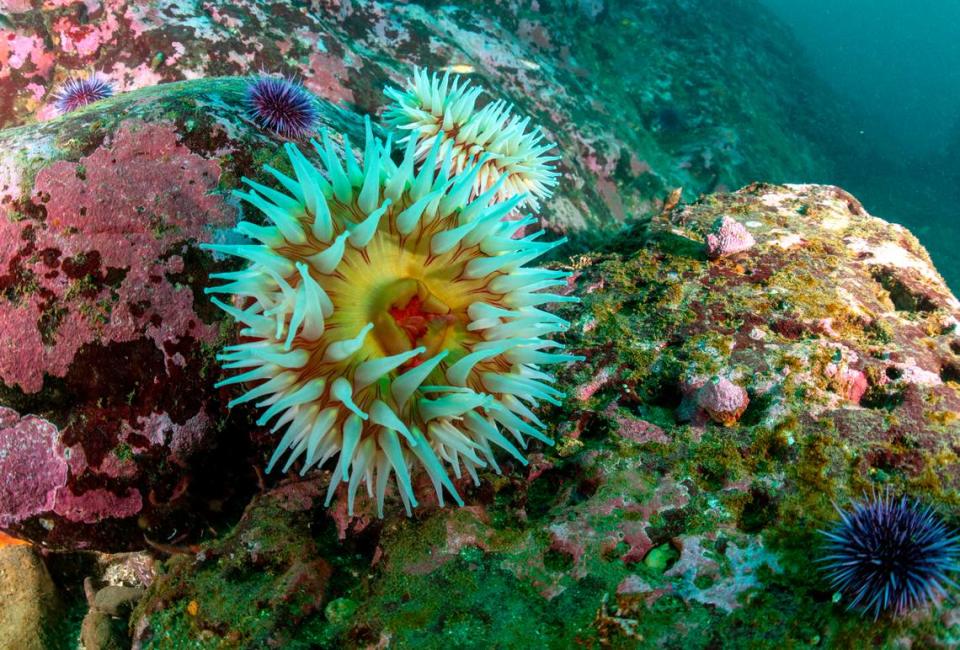
Importantly, NOAA’s proposed boundaries for the Chumash Heritage National Marine Sanctuary do not include Morro Rock, known as Lisamu’ to the Chumash and Lesa’mo’ to the Salinan. The rock is considered a place of spiritual significance for Indigenous peoples and is often the site of religious ceremonies by both the Chumash and Salinan tribes.
Khus-Zarate noted that the Coastal Band of the Chumash Nation has supported offshore wind energy development along the Central Coast as long as it is properly regulated and carefully managed to prevent detrimental environmental impacts.
“But we don’t want other forms of destructive development,” he added. “By leaving this corridor open, NOAA is leaving it open for development.”
The Santa Ynez Band of Chumash Indians has also supported offshore wind energy development, said Sam Cohen, the tribe’s government affairs and legal officer.
“We’re trying to balance the preservation of the ocean and creation of renewable energy development,” he said. “It’s a hard balance.”
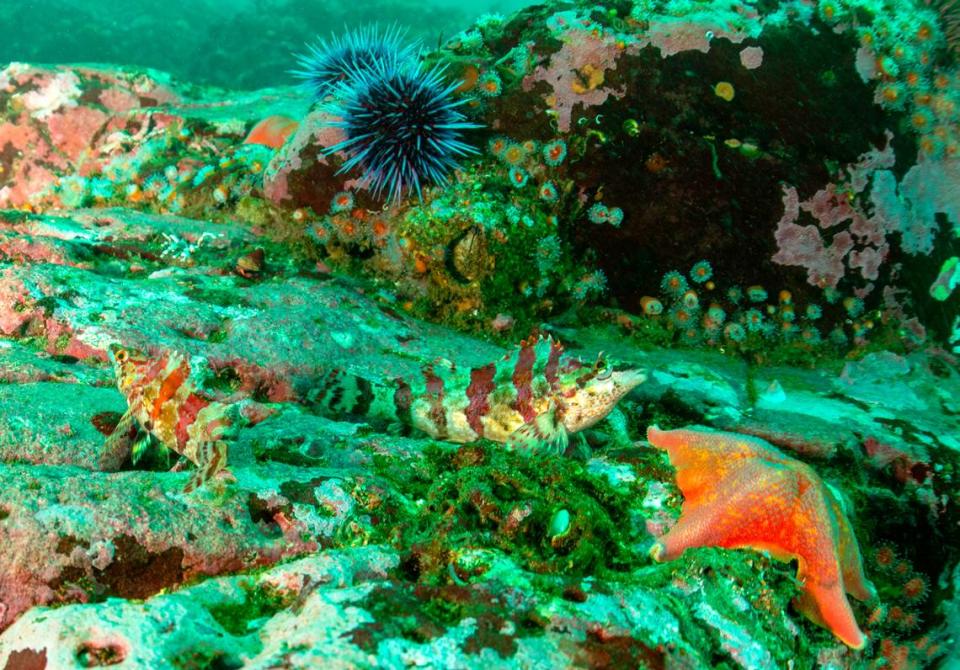
BOEM, offshore wind energy trade group advocated for boundaries
During an initial public comment period for the Chumash Heritage National Marine Sanctuary in 2022, the U.S. Bureau of Ocean Energy Management sent a letter to NOAA voicing its concern about the nominated marine sanctuary boundaries.
“Designation of CHNMS using the proposed boundaries would prevent BOEM from authorizing any post-designation transmission easements from the Morro Bay (wind energy area) to shore,” the letter said.
BOEM requested in its January 2022 letter that NOAA shift the sanctuary boundaries to ensure there were no conflicts between potential offshore wind energy cables and the marine sanctuary.
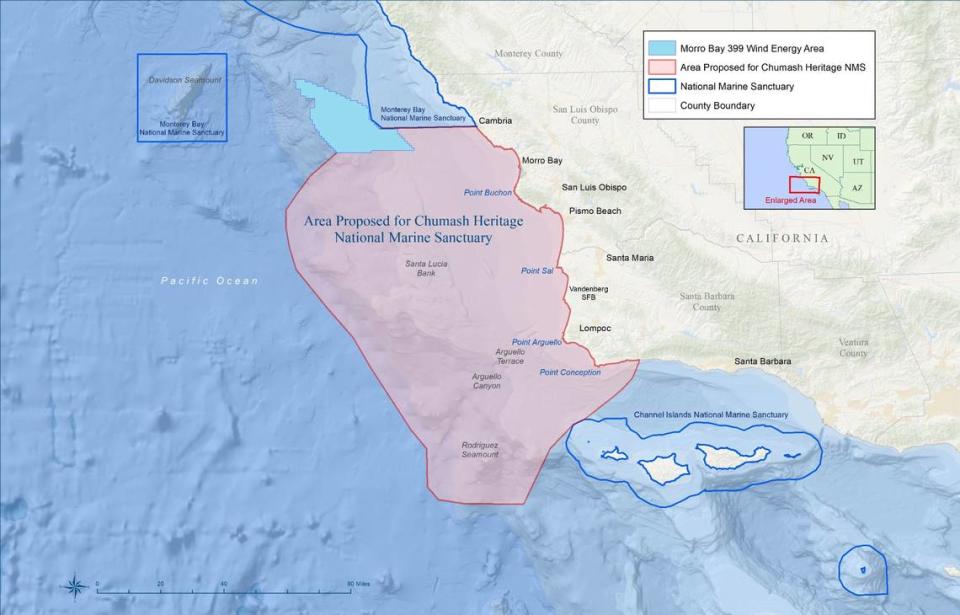
Similarly, the American Clean Power Association and Offshore Wind California, two trade groups advocating for the development of the Morro Bay offshore wind energy area, wrote a joint letter to NOAA in January 2022 to ask NOAA to move the proposed marine sanctuary boundaries.
“We are concerned that ... additional legal uncertainty could arise if NOAA were to authorize offshore wind export cables through a national marine sanctuary in BOEM’s stead,” the letter said. “The question of whether NOAA has this authority has never been put to test, and the economic viability of several multi-billion-dollar clean energy infrastructure projects should not rest on novel legal issues.
“This is particularly the case where ... NOAA can readily avoid such uncertainty by excluding from NOAA’s initial CHNMS boundaries sufficient areas to allow the planning and construction of export cables to the most likely onshore interconnection points along the Central Coast.”

When asked about the proposed boundaries of the Chumash Heritage National Marine Sanctuary, the three offshore wind energy companies that won bids to develop in the Morro Bay wind energy area — Equinor, Invenergy and Golden State Wind — told The Tribune they were still reviewing the draft designation documents.
The companies each noted, however, that they are eager to work with both NOAA and BOEM to ensure the projects can connect to the grid.
“To give California full access to the clean energy it needs from the Morro Bay leases, it is vital that offshore wind projects be able to connect to the grid at both Morro Bay and Diablo Canyon,” Golden State Wind CEO Tyler Studds wrote in an email to The Tribune. “The ongoing regulatory process will determine if that can be accomplished through permits that allow power cables to travel through the new sanctuary or if adjustments need to be made to the boundaries.
“It is clear that, at the end of the day, the goals and mission of the sanctuary are fully compatible with building climate-protecting, clean offshore wind energy and bringing that power to Central Coast homes.”

